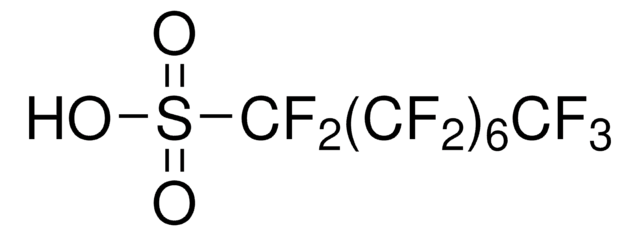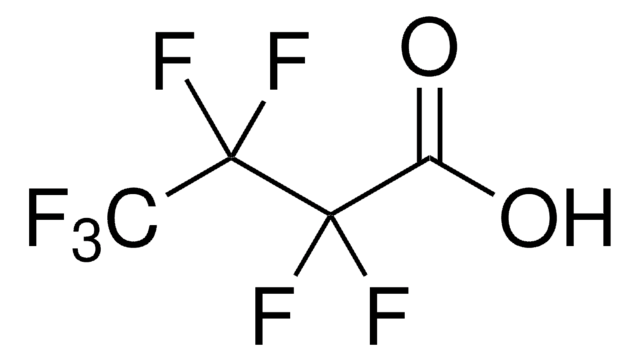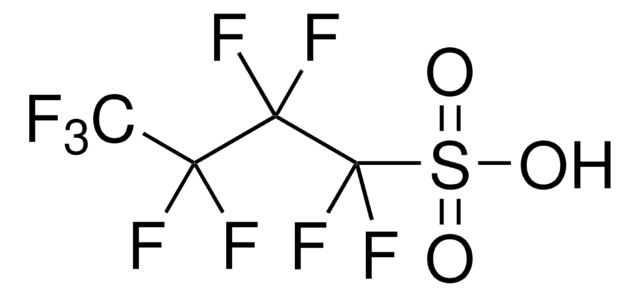77282
Heptadecafluorooctanesulfonic acid potassium salt
≥98.0% (T)
Synonym(s):
Perfluorooctanesulfonic acid potassium salt, Potassium heptadecafluoro-1-octanesulfonate
About This Item
Recommended Products
Assay
≥98.0% (T)
form
crystals
mp
277-280 °C (lit.)
SMILES string
[K+].[O-]S(=O)(=O)C(F)(F)C(F)(F)C(F)(F)C(F)(F)C(F)(F)C(F)(F)C(F)(F)C(F)(F)F
InChI
1S/C8HF17O3S.K/c9-1(10,3(13,14)5(17,18)7(21,22)23)2(11,12)4(15,16)6(19,20)8(24,25)29(26,27)28;/h(H,26,27,28);/q;+1/p-1
InChI key
WFRUBUQWJYMMRQ-UHFFFAOYSA-M
Looking for similar products? Visit Product Comparison Guide
General description
Application
- A fluorinated surfactant for poly(vinylpyrrolidone)/aminopropyl-functionalized nanoclay films to achieve hydrophobicity and oleophobicity.
- A surfactant in the preparation of core-shell polymers for lithium-ion batteries.
- A reactant to synthesize dicationic ionic liquids.
Signal Word
Danger
Hazard Statements
Precautionary Statements
Hazard Classifications
Acute Tox. 3 Oral - Acute Tox. 4 Inhalation - Aquatic Chronic 2 - Carc. 2 - Lact. - Repr. 1B - STOT RE 1
Storage Class Code
6.1C - Combustible acute toxic Cat.3 / toxic compounds or compounds which causing chronic effects
WGK
WGK 3
Personal Protective Equipment
Certificates of Analysis (COA)
Search for Certificates of Analysis (COA) by entering the products Lot/Batch Number. Lot and Batch Numbers can be found on a product’s label following the words ‘Lot’ or ‘Batch’.
Already Own This Product?
Find documentation for the products that you have recently purchased in the Document Library.
Customers Also Viewed
Our team of scientists has experience in all areas of research including Life Science, Material Science, Chemical Synthesis, Chromatography, Analytical and many others.
Contact Technical Service












